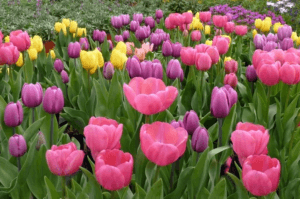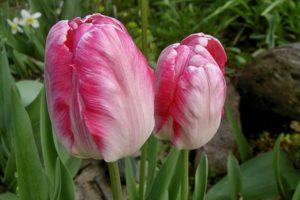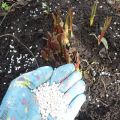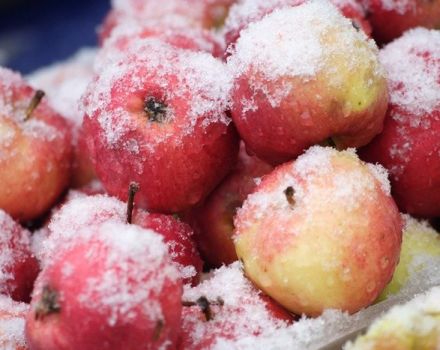Description of the tulip variety Double of Beauty Apeldoorn, planting and care
Tulips are among the first to bloom in early spring. The double of Beauty Apeldoorn tulip belongs to the terry varieties. It is easy to grow and grows quickly after planting.
Description and characteristics of the tulip Double of Beauty Apeldoorn
This tulip variety belongs to terry tulips. The inflorescence is formed by several petals. The diameter of the inflorescence is 10-15 cm. The petals are of a rich yellow-orange hue. The shape of the inflorescence resembles a glass. The height of the stem is from 40 to 60 cm. The leaves are of a rich green hue, characteristic of tulips.
The Double of Beauty Apeldoorn variety resembles a peony in appearance, therefore this hybrid is called peony. This variety differs from other tulip varieties in later flowering periods and in the large size of the entire flower.
Breeding history of the variety
The tulip of the Double of Beauty Apeldoorn variety was bred by the Dutch breeder Derek Lefeber in 1951. This hybrid is planted near monuments and monuments.
Advantages and disadvantages of the variety
The advantages of this variety include:
- Unpretentious fit and care.
- The shape of the inflorescences and the shade of the petals.
- Looks beautiful in a flower bed and in landscape design.
- Suitable for making bouquets.
- Inflorescence diameter.
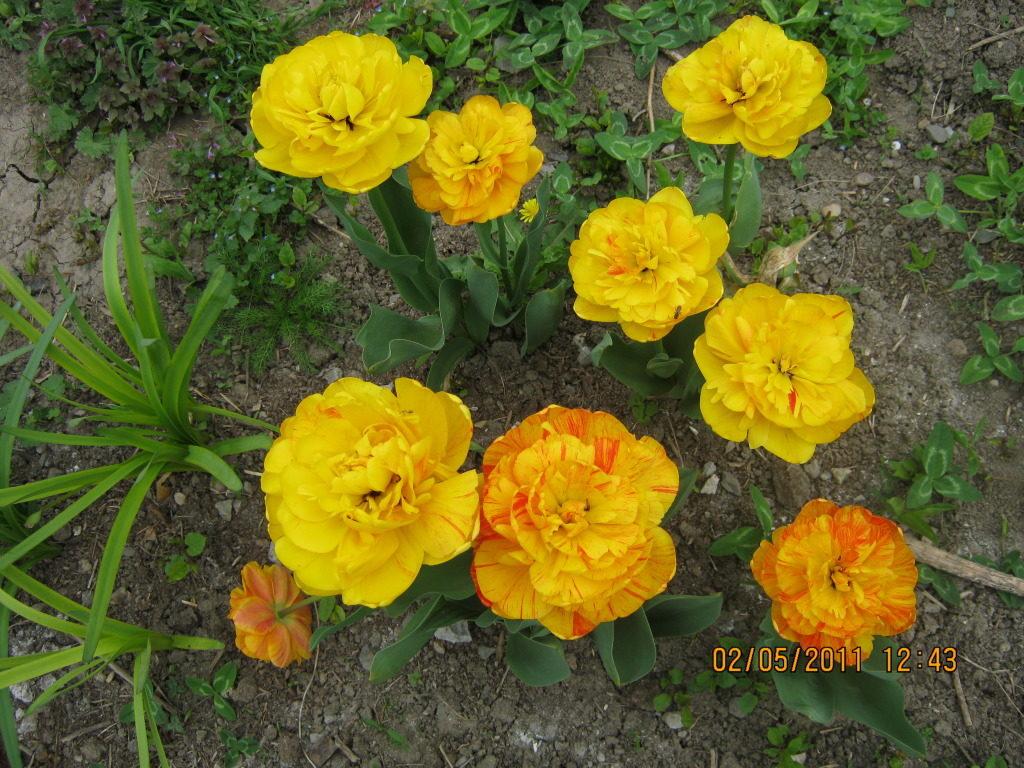
Of the shortcomings, it should be noted that double varieties often break due to the severity of the flowers, especially in the wind or during heavy rainfall.
Features of growing a flower
The Double of Beauty Apeldoorn variety is unpretentious. It is easy to grow it, the planting process does not require special knowledge or skills. The main thing is to follow the rules of agricultural technology.
Selecting and preparing a landing site
The stems of terry varieties often break due to strong wind or rain, so it is worth choosing places that are protected from drafts for planting. It is also undesirable to plant flowers in the shade. Preference should be given to open sunny areas. One more point - tulips are not recommended to be planted in the lowlands. Stagnant water in spring and autumn leads to the fact that plants begin to get sick with fungal diseases.
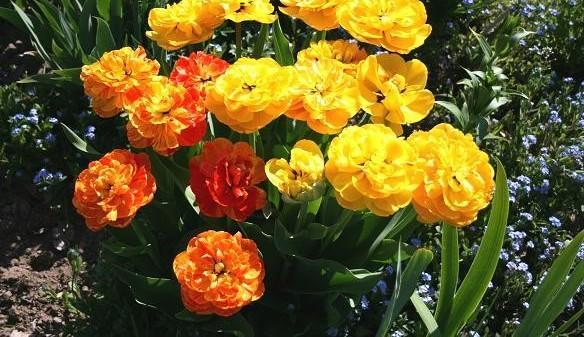
Flowers prefer to grow in loose and well-drained soil. Although the culture is unpretentious and can grow on any type of soil. The soil type is sandy loam or loamy, the acidity is neutral or slightly acidic. If the soil is heavy with a high level of acidity, it is deacidified before planting. A mixture of sand and peat is introduced into the soil.
Preparing the bulbs
Before planting the bulbs in the soil, they are carefully examined so as not to plant diseased specimens. The seeds are peeled from the upper husk. This allows you to get rid of infections that are not always noticeable at first glance, and allows the bulbs to more actively absorb nutrients from the soil. Before planting in the ground, the bulbs are sprinkled with wood ash and sand.
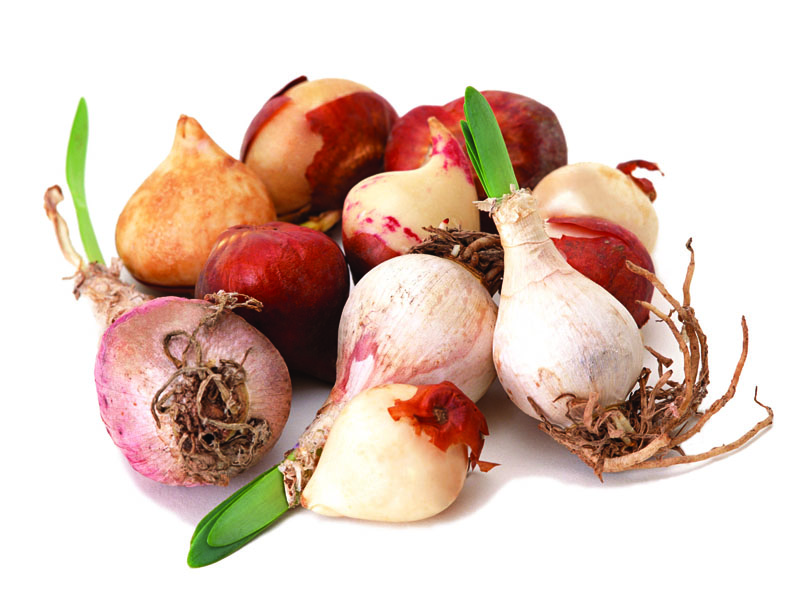
Landing technology
Tulips of all varieties are planted using the same technology. The most favorable period for planting is in the fall from mid-September to mid-October.
The process of planting bulbs in a flower bed:
- Dig up the soil and mix the soil with mineral fertilizers.
- Dig holes or grooves 3-4 cm deep.
- Plant bulbs in them and cover with soil.
- It is undesirable to water the wells immediately after planting, irrigation is carried out after 3-4 days.
Before the onset of cold weather, the beds with tulips are covered with spruce branches, first of all, this is necessary for the northern regions.
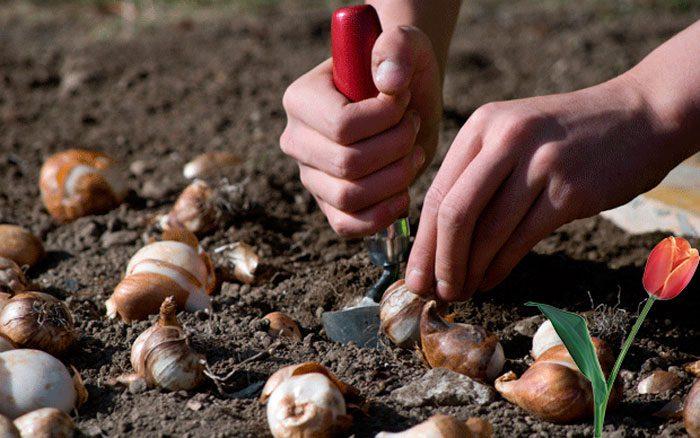
Tulip care rules
Another important point is plant care. The tulip belongs to unpretentious crops, but this does not mean that it does not require attention. The minimum care of the crop includes watering, applying top dressing to the soil and preparing the tubers for winter. Prevention of diseases and pests is also important.
Watering
Tulips are watered several times a week, during the period of active growth and swelling of the buds, irrigation is increased. Watering is recommended only with warm water. In hot weather, the amount of humidification and the volume of infused water should be increased. Tulips are thermophilic crops, so they need a lot of water. Flowerbeds are watered in the evening, after sunset.
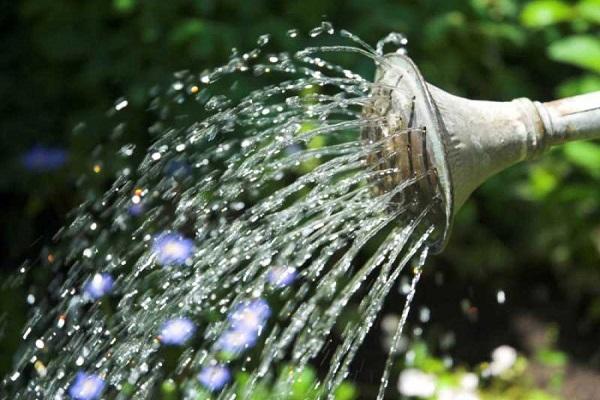
Fertilizers
The first time fertilizers are applied when the snow is just beginning to melt. Fertilizers are simply scattered over the melting snow. During the tulip growth period, phosphorus and nitrogen are used. During flowering, tulips need a large amount of phosphorus and potassium, they stop adding nitrogen to the soil.
Organic fertilizers are also used for feeding, for example, urea, decoctions of weeds, wood ash.
Wintering
After flowering, the culture must be dug up. This is necessary so that the plant does not degenerate and the bulbs do not go deep into the soil. The bulbs are dug out some time after flowering, when the deciduous part dries up by about 2/3. Then the bulbs are dried, the dry husks are removed and the babies are separated from the mother's bulb. After that, the tubers are laid out on the floor and allowed to dry for several days.
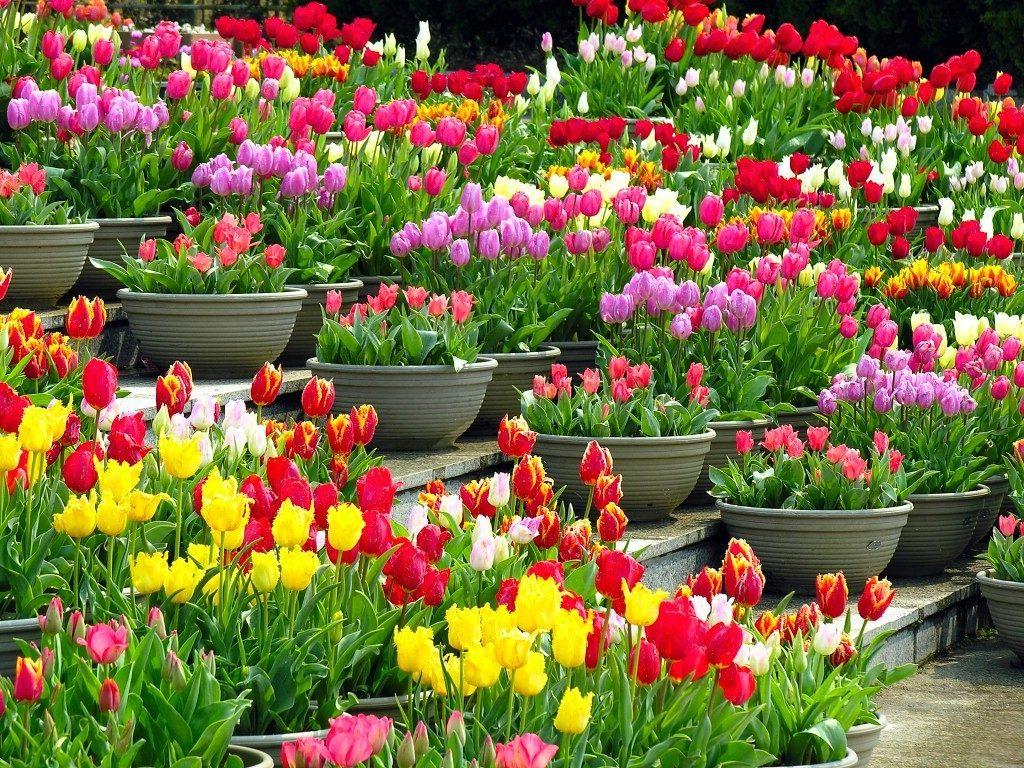
The dried bulbs are placed in wooden boxes and left there until autumn. And in the fall they are planted again in the soil. For the winter, flower beds are covered with spruce branches or sawdust so that the bulbs do not freeze.
Diseases and pests
To prevent the appearance of diseases and pests, flower beds with tulips are regularly cleared of weeds and the soil is weeded. Organic and mineral dressings must be added to the soil. Tulips should be repotted every 4 years. They are planted on an old flower bed no earlier than 2 years later.
Plants often infect such pests and diseases:
- gray rot;
- white rot;
- fusarium;
- typhulosis;
- root onion mite;
- onion hoverfly;
- bear;
- wireworm;
- purple scoop.
Most of the problems with growing can be avoided if you follow the rules of agricultural technology. If diseases appear, the soil must be disinfected with a solution of potassium permanganate in order to avoid re-infection.
